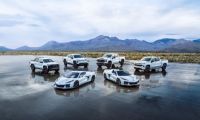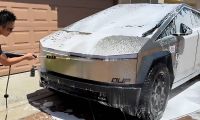Despite Tesla having the loudest voice in automated rideshare, it is GM and Hyundai who are closest to commercializing the robotaxi. For those just tuning in, a robotaxi is a driverless rideshare vehicle. Like with many aspects of vehicle automation, Tesla seems better at creating headlines than creating products.
Uber started robotaxi service last year. As reported by Clean Technica ( a decidedly pro-Tesla publication), “Over in Las Vegas, Uber users can now virtually hail a full-on robotaxi.” The taxi that comes for you is a Hyundai Ioniq 5. You may know the Ioniq 5 as the vehicle that has earned pretty much every single automotive award - EV or not - over the past two years. The Hyundai that picks you up (and it’s presently free, by the way) will have a safety monitor/occupant in the front. Hyundai and Uber say that will end this year if all continues to go well.
Back in July, Cruise received the first-ever Driverless Deployment Permit granted by the California Public Utilities Commission, which allows Cruise to charge a fare for the driverless rides they now provide in San Francisco. Cruise has announced that the company will be commercializing and scaling up the robotaxi service it now provides. The company says that Cruise will be the first company to operate a commercial, driverless ride-hail service in a major U.S. city. The race is on and it looks like it will be neck and neck to see if either Hyundai or GM’s Bolt becomes the first platform used to provide driverless robotaxi service in America.
Waymo now operates driverless taxis in Arizona. The company isn't tied to one vehicle model and opts not to use Tesla vehicles. On its website, Waymo highlights Chrysler minivans. After all, an affordable plug-in three-row minivan makes a lot more sense as a taxi than a cramped Model 3, pricey Model Y, or crazy-expensive Model X or Model S.
Robotaxi deployment is not the only way that Tesla has fallen behind in vehicle automation. Presently, six brands deliver U.S. models with hands-free driver automation, including Chevy and Ford. Tesla has no hands-free driver assistance package, and recently strengthened its hands-on monitoring and safety features.
Would you like to see Tesla fulfill its four-year-old promise to deliver a robotaxi to American owners and businesses in 2023? If so, tell us in the comments below.
Hyundai robotaxi image courtesy of Hyundai. Cruise Chevy Bolt image courtesy of Cruise.
John Goreham is a long-time New England Motor Press Association member and recovering engineer. John's interest in EVs goes back to 1990 when he designed the thermal control system for an EV battery as part of an academic team. After earning his mechanical engineering degree, John completed a marketing program at Northeastern University and worked with automotive component manufacturers, in the semiconductor industry, and in biotech. In addition to Torque News, John's work has appeared in print in dozens of American news outlets and he provides reviews to many vehicle shopping sites. You can follow John on TikTok @ToknCars, on Twitter, and view his credentials at Linkedin
Re-Publication. If you wish to re-use this content, please contact Torque News for terms and conditions.












